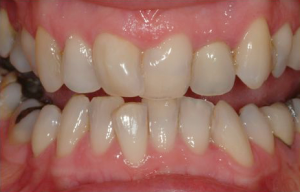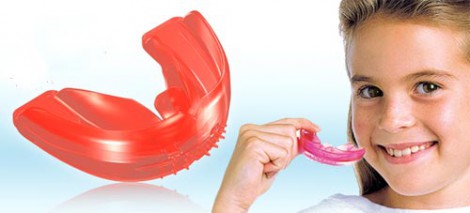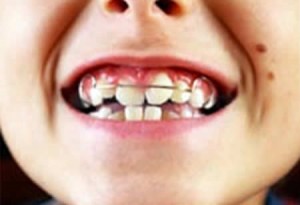The consequences of malocclusion

An incorrect bite in a person is one of the unpleasant aesthetic disorders, often leading to the development of complexes.
The consequences of malocclusion can not only affect the appearance of its owner, but also affect the functioning of the dentition and the body as a whole.
The development of malocclusion may be the result of a genetic predisposition.
Among other reasons for the development of pathology, it is necessary to pay attention to the following factors:
- Incorrect nasal breathing, mainly breathing through the mouth.
- Bad habits associated with sucking reflexes (sucking fingers, dummy abuse).
Complications
The consequences that may result from a malocclusion depend on the following factors:
- Difficulties in the development of anomalies.
- Type of bite pathology.
Depending on these factors, there may be certain consequences of malocclusion.
- Wrong bite must be corrected from early childhood.
- The first visit to the orthodontist should occur no later than six years of age.
- The setting of teeth at this age is important, since during this period the growth and formation of the jaws occurs.

The process of development of the dentofacial system is considered irreversible, and with the development of the pathological process at a later date, the treatment of the anomaly becomes difficult.
In the period from 6 to 12 years, the child has a change in primary teeth permanent.
Treatment at this stage is most comfortable for the correct eruption of new teeth.
Video: “Causes of malocclusion”
The consequences of a wrong permanent bite
The negative consequences of malocclusion in children and adults include:
- An increase in the chewing load on the teeth, which leads to the early development of periodontal disease. As a result, premature tooth loss can occur.
- The temporomandibular system becomes more susceptible to various diseases. Among these signs are clicking and crunching in the temporomandibular joint, the presence of pain when chewing, pain in the neck and back, and headache.
- As a result of defective chewing of food, the organs of the digestive system begin to experience a high functional load, which can provoke the development of diseases.
- In the presence of crooked teeth, hygienic care for them is difficult, which accelerates the formation of plaque and leads to the development of periodontal disease and caries.
- Bent teeth are more difficult to restore and prosthetics. When installing a bridge, it is necessary to remove a curved tooth due to the impossibility of fixing a dental crown on it.
- The occurrence of problems with swallowing.
- The appearance of facial asymmetry associated with the displacement of the jaws.
- Exposure to diseases of ENT organs.
- Night grinding of teeth (bruxism), which can provoke diseases of the temporomandibular joints and tooth enamel is destroyed.
- Depression, as a result of a lack of aesthetics, as the face profile changes, asymmetry and other appearance defects appear.
- The presence of increased tooth abrasion.
Treatment
To avoid more radical methods of correcting malocclusion in the future, orthodontists recommend the installation of trainers, cap, plates.
In the event that time is lost, the doctor may suggest the installation of a bracket system, which also should not be abandoned.
Bite correction in a child

- For children under six years of age, myogymnastics is recommended. A special set of exercises can be used at the age of three years.
- The use of hardware methods (records, caps, trainers, bracket systems).
- If correction using orthodontic structures is ineffective, surgery is used.
- Comprehensive treatment is carried out at the age of 7 to 10 years and includes a combination of hardware techniques with surgical treatment.
Treatment of abnormalities in adults
Bite correction in an adult takes a much longer period of time than in children.
- Initially, a comprehensive treatment of the oral cavity is carried out, the restoration of lost and destroyed teeth.
- Installation of braces, which is quite effective.
The disadvantage of installing a bracket system in adults is the aesthetic aspect.